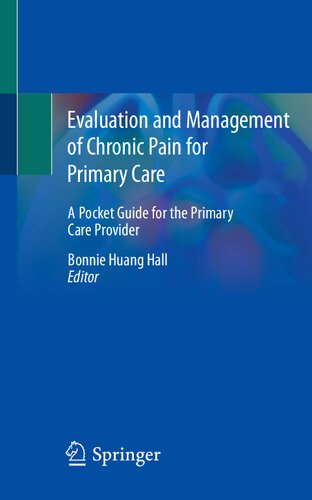

Most ebook files are in PDF format, so you can easily read them using various software such as Foxit Reader or directly on the Google Chrome browser.
Some ebook files are released by publishers in other formats such as .awz, .mobi, .epub, .fb2, etc. You may need to install specific software to read these formats on mobile/PC, such as Calibre.
Please read the tutorial at this link: https://ebookbell.com/faq
We offer FREE conversion to the popular formats you request; however, this may take some time. Therefore, right after payment, please email us, and we will try to provide the service as quickly as possible.
For some exceptional file formats or broken links (if any), please refrain from opening any disputes. Instead, email us first, and we will try to assist within a maximum of 6 hours.
EbookBell Team

4.0
56 reviewsPrimary care physicians are often the first caretakers to whom patients present for chronic pain. The current literature targeted at these providers is sparse, and the existing literature is very broad and large in scope and size. There are no quick pocket guides on this topic that the general practitioner may use as a point of care reference. This first of its kind text provides a practical, hands-on approach to the evaluation and treatment of chronic pain in the family medicine setting.
Divided into four main sections, the first part focuses on the general approach to any patient suffering from chronic pain. Chapters in this section include the physical exam, formulating a diagnosis, formulating a variety of treatment plans including medication, physical therapy and psychiatric therapy, and specialist referral, among others. The second section focuses on evaluation and management of the chronic pain patient who requires opioid therapy. This section includes useful guidance on how to convert into morphine equivalents, interpretation of urine drug tests, and helpful office procedures for managing refills. It gives practical guidance on how to prescribe opioid reversal agents and opioid tapering regimens. A systems based approach to managing the patient is also discussed. The third section informs the reader of viable alternative and complementary treatment options. Five main treatment types are discussed each with their own separate chapter. These include musculoskeletal-based therapy, medicinal therapies, sense-based therapy, relaxation-based therapy and physical/exercise-based therapy. Given the controversy and limited training primary care physicians have on marijuana and cannabis, one chapter is dedicated specifically to inform the primary care physician on marijuana as a medicinal therapy for chronic pain. The fourth section focuses entirely on myofascial pain and trigger point therapy. The chapters in this section teach the reader how to examine and diagnose myofascial pain and distinguish between fibromyalgia. They also provide general principles of myofascial trigger point therapy and how to practically perform these in sthe clinical setting. Topics discussed include: trigger point massage, cold and stretch, isometric contraction, trigger point injection, and ischemic compression. It also includes general instruction so that the practitioner can teach patients how to perform trigger point therapy easily in their own home. The last chapter details chronic myofascial back pain and how to examine and practically treat with trigger point therapies.
Evaluation and Management of Chronic Pain is a first-of-its-kind pocket-guide text specifically designed for primary care providers. It also appeals to residents, medical students and any other professional interested in treating chronic pain.